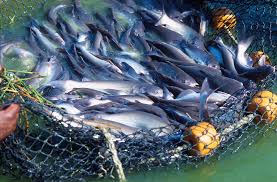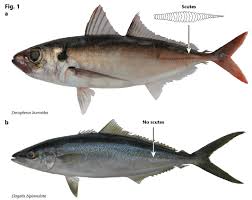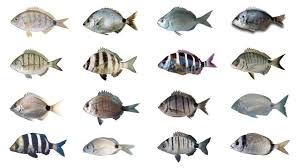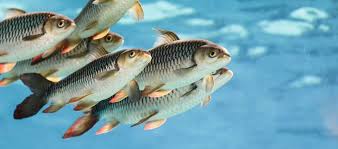Animal ecology is a critical field of study for scientists, focusing on the relationships between animals and their environments. Various forms of animal ecology exist, and studying them reveals factors that contribute to the prosperity or decline of species. Human activities are among the most significant threats to animal ecology today.
Aquatic ecosystems provide some of the most striking examples of this impact. Lakes, coastlines, and marine life demonstrate the extent of environmental damage caused by human actions. Animal ecology has undergone drastic changes as species struggle to adapt. Key examples include:
- Marine habitats, such as coral reefs and delicate ecosystems, have been degraded or destroyed due to human presence.
- Melting ice in Arctic regions has reduced polar bear populations and disrupted the resting grounds of sea lions and other marine species.
- Dams and altered waterways have disrupted aquatic ecosystems, limiting animals’ access to essential water sources.
- Deforestation has erased vital habitats for jungle-dwelling species.
- Urban expansion has forced animals out of their natural habitats.
Scientists aim to understand these changes and their long-term effects on species survival. The study of animal ecology provides insights into these challenges, helping to mitigate further damage.
Read Also: Gumboro Disease: Symptoms and Prevention
Detailed Ecology and Biology of Key Fish Species in Agriculture and Aquaculture

1. Clupeidae Family: Adaptability and Ecological Preferences
Most clupeid species are marine, though some, like shads and Ethmalosa fimbriata (bonga), thrive in low-salinity waters, especially during the rainy season.
i. Bonga (Ethmalosa fimbriata): A Euryhaline Species
Bonga is a crucial clupeid species in Nigeria’s coastal waters, rarely venturing below 20 meters. Highly adaptable to varying salinity levels, it inhabits estuaries, lagoons, and open seas. Preferring warm, turbid waters, it often replaces sardinellas in areas with strong surface desalination.
A non-selective filter-feeder, bonga primarily consumes diatoms and phytoplankton. Seasonal migrations into estuaries coincide with plankton abundance, peaking from October to April.
Juveniles dominate riverine and estuarine zones, while adults are found both inshore and offshore. This species is a key target for artisanal gillnet and beach seine fisheries.
ii. Shad (Ilisha africana): An Anadromous Clupeid
Shad thrives in inshore waters, estuaries, and freshwater systems, reaching up to 22 cm in length. Its diet includes crustaceans and small fish, making it susceptible to beach seines, gillnets, purse seines, and trawls.
iii. Sardinella (Sardinella spp.): Coastal and Temperature-Sensitive
Flat sardinellas range from Mauritania to Angola, favoring warm (>24°C), clear waters near river outlets. They avoid low-salinity zones like the Bight of Biafra. Though not a primary target, they are caught using ring nets, gillnets, and trawls.
2. Carangidae Family: Diverse and Widely Distributed

i. Jacks (Caranx spp.): Versatile Predators
Found from Senegal to Angola, Caranx species inhabit estuaries and deep waters (>100 m). Feeding on fish and crustaceans, they are targeted by artisanal and industrial fleets using trawls, seines, and gillnets.
ii. Atlantic Bumper (Chloroscombrus chrysurus): Schooling Pelagic Species
This species occupies Nigeria’s continental shelf (10–50 m) and estuaries. Juveniles associate with jellyfish offshore. It is harvested using gillnets, seines, and trawls.
iii. False Scad (Decapterus rhonchus): Near-Bottom Schooler
Inhabiting depths of 30–200 m, this species feeds on small fish and invertebrates, primarily caught by industrial trawlers.
iv. Horse Mackerel (Trachurus spp.): Deep-Water Aggregations
Found at 100–200 m depths, these sandy-bottom dwellers are targeted by offshore trawlers and purse seiners.
3. Polynemidae Family: Threadfins and Their Habitats
i. Lesser African Threadfin (Galeoides decadactylus): Hermaphroditic Strategy
This species thrives in sandy-silt bottoms, migrating to estuaries for spawning. A key target for gillnets and trawls, it feeds on benthic organisms.
ii. Royal Threadfin (Pentanemus quinquarius): Sandy-Bottom Dweller
Found at depths up to 50 m, it is caught by gillnets and trawls.
iii. Giant African Threadfin (Polydactylus quadrifilis): Estuarine Giant
Reaching 150–200 cm, this species inhabits estuaries and offshore sands, heavily targeted by gillnets and seines.
4. Sciaenidae Family: Croakers and Drums
i. Bobo Croaker (Pseudotolithus elongatus): Estuarine Migrant
Preferring low-salinity zones, this species spawns offshore during rains. Caught by trawls, seines, and longlines.
ii. Longneck Croaker (Pseudotolithus typus): Largest Commercial Sciaenid
Growing to 100 cm, it dominates muddy and sandy bottoms (<60 m). A staple for artisanal and industrial fisheries.
iii. Boe Drum (Pteroscion peli): Deep-Water Species
Inhabiting depths to 200 m, it is primarily harvested by trawlers.
Read Also: Vaccination Program for Poultry Chickens
5. Sparidae Family: Seabreams and Reproductive Strategies

i. Angola Dentex (Dentex angolensis): Protogynic Hermaphrodite
Found at 15–300 m, this carnivore shifts from female to male at 18–23 cm.
ii. Red Pandora (Pagellus bellottii): Omnivorous Seabream
Abundant but not a primary target, it feeds on crustaceans and small fish.
6. Other Notable Species and Penaeid Shrimps
Ariidae, Bagridae, and others highlight interactions between brackish and marine fisheries.
i. Penaeid Shrimps: Recruitment and Exploitation Phases
Penaeus notialis (pink shrimp) dominates Nigerian waters, with juveniles migrating from nurseries to deeper waters. Recruitment phases align with gear accessibility:
- Nursery exits (artisanal fisheries).
- Bay entry (small trawlers).
- Migration (fixed nets).
- Offshore arrival (industrial trawlers).
Do you have any questions, suggestions, or contributions? If so, please feel free to use the comment box below to share your thoughts. We also encourage you to kindly share this information with others who might benefit from it. Since we can’t reach everyone at once, we truly appreciate your help in spreading the word. Thank you so much for your support and for sharing!

